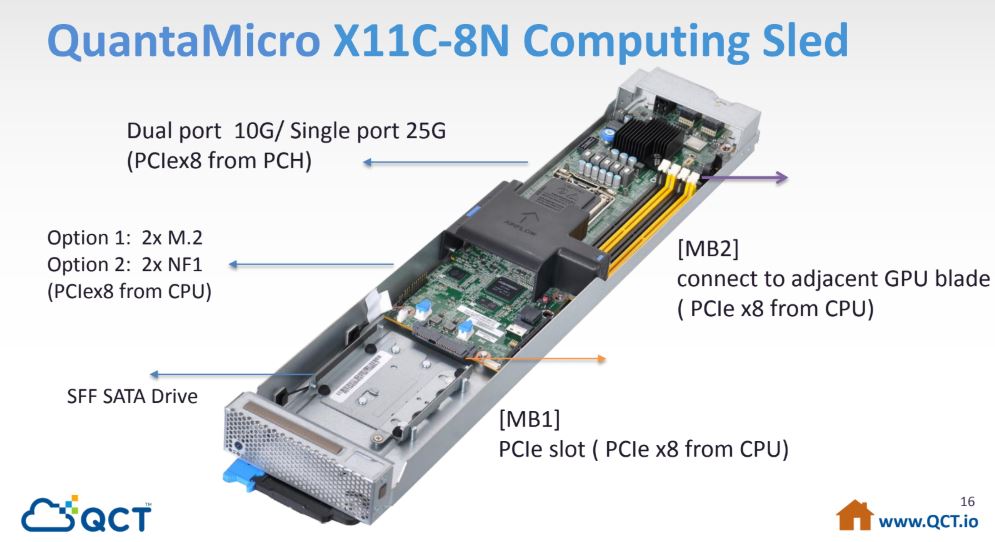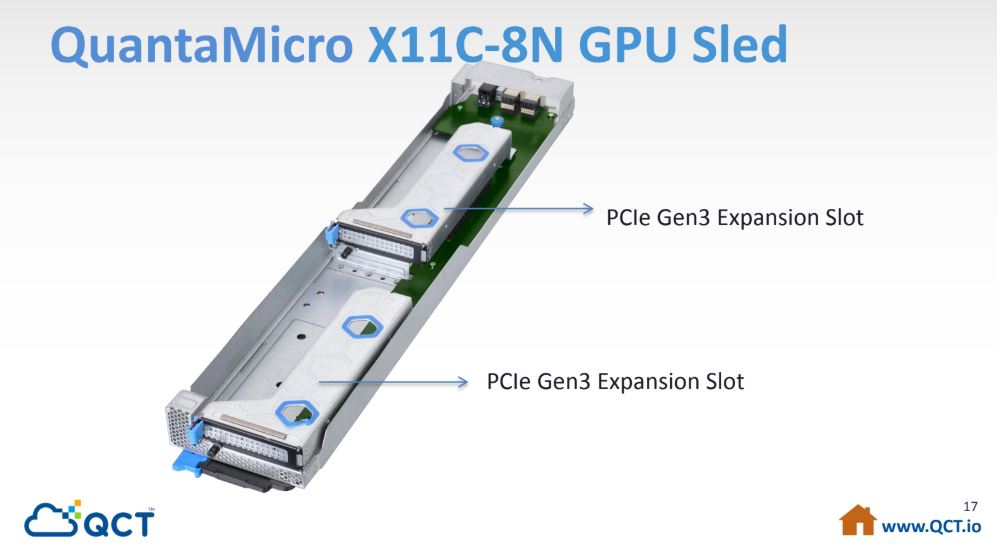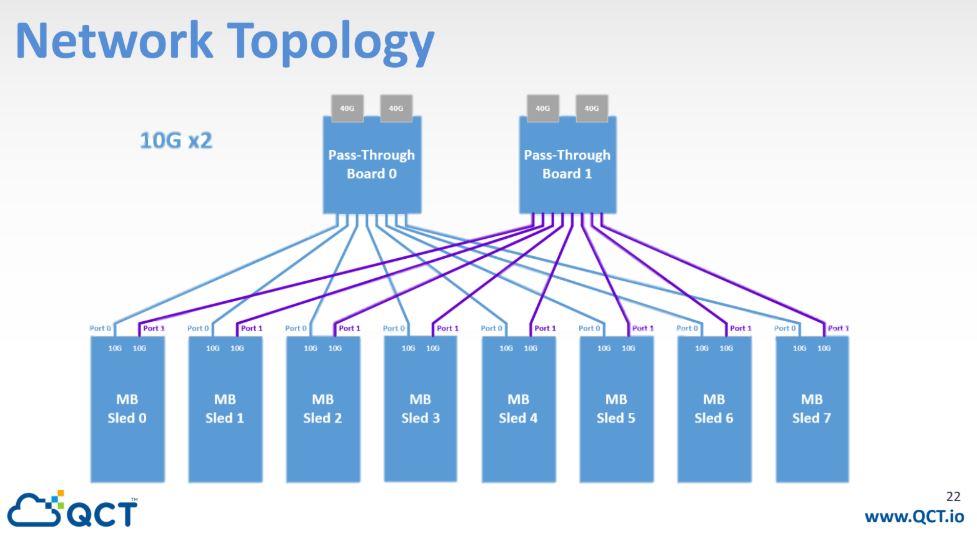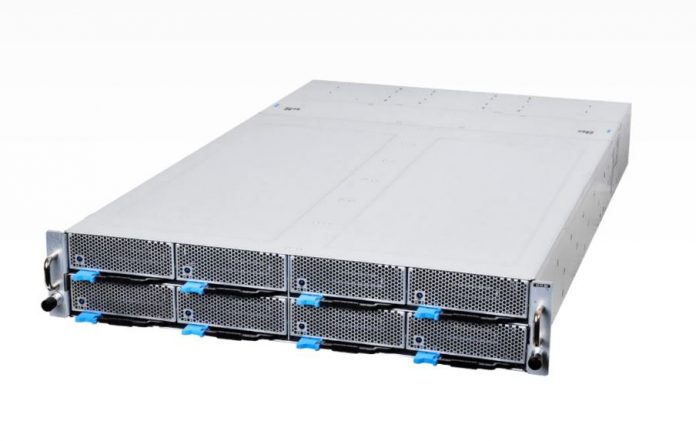As part of today’s re-launch of the Intel Xeon E-2100 series for the server market, Quanta QCT has a new product out that will raise some eyebrows. The QCT QuantaMicro X11C-8N is a 2U 8-node Intel Xeon E-2100 server that is designed for dense deployments. The premise is simple: put as many Intel Xeon E-2100 nodes as possible into 2U of space while preserving the ability to have customization and networking flexibility in the platform.
QCT QuantaMicro X11C-8N 2U Microserver
As you can see from the cover image, QCT is drawing on its hyper-scale design roots to deliver a dense Intel Xeon E-2100 system. There are up to eight compute sleds. Each sled has a single Intel Xeon E-2100 CPU along with a full set of four DDR4 DIMM slots. For storage, each sled has a 2.5″ SFF SATA drive bay and room for two PCIe based storage devices. One can use either two M.2 drives or two NF1 drives with the sled. Networking is provided by either dual 10GbE or a single 25GbE uplink.

Instead of fully populating with 8x compute nodes, there is also an option to use a GPU sled. This has two expansion slots for low profile PCIe GPUs that may include cards like the NVIDIA Tesla T4.

Here is a quick look at the network topology with the dual 10GbE solution. The 25GbE solution only utilizes a single uplink to a pass-through board.

This design does not have switching which would be characteristic of a blade type server. Instead, it relies upon external networking. The nice feature is that this networking is aggregated to minimize the number of cables needed in a rack.
Final Words
The benefits of the QCT QuantaMicro X11C-8N should be obvious. Using redundant 1600W power supplies means that two power supplies are shared among eight nodes providing redundant power. That lowers the number of power supplies by almost 88% and removes 14 power cables from a rack and PDUs. The aggregated networking using a 10GbE scenario means that only 4x QSFP+ 40GbE uplinks are needed for 8 servers instead of 16x SFP+ uplinks. Cables are reduced by another 7 by removing the need for individual out-of-band IPMI management cables. Aside from the obvious density increase by fitting 8x nodes in 2U of space, The QuantaMicro solution also takes the cables required from 40 to 7 making maintenance significantly easier.
We hope to have a STH review in the near future on this system so stay tuned for more.





“Instead of fully populating with 8x [comptue] nodes…” ;-)